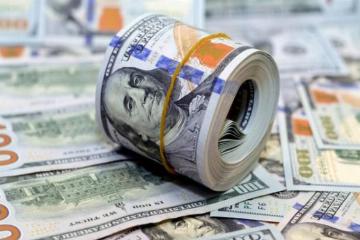The U.S. Weaponizes $36 Trillion in Debt
Advertisements
The ongoing phenomenon of the U.Sdollar's dominance combined with its military prowess has gained traction as a tool for America's global exploitationThis strategy, underpinned by a staggering national debt of 36 trillion dollars, continues unabated despite increasing resistance from various nationsThe current economic and political landscape of the United States has been profoundly reshaped by this colossal debt, which also reverberates throughout the global economy.
To comprehend the origins and evolution of the U.Sdebt-driven hegemony, one must reflect on the financial crisis of 2008. This was the year American capitalists encouraged citizens to acquire homes by leveraging loansAs the crisis sparked a domino effect, financial institutions like banks, insurance companies, and securities firms began to falter, creating a whirlwind of instability that took the world by storm.
Normally, as the world's leading economy, the U.S
Advertisements
could have bolstered its financial health by revitalizing its high-end manufacturing sectors, such as Texas Instruments or Boeing, thereby exporting goods to fill the fiscal gaps left in the wake of the crisisHowever, this method posed substantial difficulties as the country found itself unwilling to commit to labor-intensive industries.
Instead, the U.Sopted to issue government bonds backed by its national credit, an attractive offer to the rest of the world due to its number one statusAs a result, capital flooded into the U.S., allowing it to bolster welfare programs and stimulate failing businessesTen years post-crisis, the economy began showing signs of recovery, but the price paid was an entire decade's worth of accumulating 10 trillion dollars of debt.
This large-scale borrowing led the U.Sto a startling realization: it didn’t need to rely on hard work or manufacturing; profiting from financial operations could sufficiently cover expenses
Advertisements
The country became addicted to bond sales, progressively abandoning its manufacturing sectorThe hollowing out of the manufacturing base post-2008 meant that, instead of strengthening its domestic production, the U.Sdiverted focus toward reliance on debt instruments.
Investors across the globe began raising apprehensions regarding the practicality and sustainability of American bondsThe funds reinforced programs that could not generate new value, leading many to view the U.Sas akin to a shell company without a core business or cash flow but rather a façade reliant on loans to finance its military—the “bodyguards” as it wereBy 2010, many nations started to withdraw their investments in American debt due to these alarming realizations.
The stakes escalated quickly; a failure to reassure bondholders could collapse U.Scredit and thus, its imperial stature
Advertisements
Consequently, America took drastic measures: post-2010, there was a significant surge in defense spending, as military strength became a central tenet of protecting American interests—often at the expense of other nations.
In a crucial turning point in 2010, the dollar’s global hegemony faced challenges as the euro began to rise, positioning itself as the second most important currency in international transactionsThis shift in monetary power posed a serious threat to the superiority of the dollarIn response, the U.Sexecuted a dual strategy: brandishing military intimidation while also manipulating financial narratives through media control, particularly focusing on the debt crises affecting countries like Greece, Portugal, and Spain, thus instigating widespread panic.
As a result, the demand for euros dwindled, leading to a capital repatriation back into U.STreasury bonds
- Tianqi Lithium Faces Potential $1.2 Billion Loss
- Gold Prices Surge to Record Highs in January
- Dual Strategies to Bolster Cross-Border E-Commerce
- France Faces Persistent Economic Risks
- Goldman Sachs Embraces Open-Source AI
Yet, in a dramatic twist, German Chancellor Angela Merkel's proposition for Russia to join the EU came into playAs the EU, a leading industrial center, sought to alleviate its resource scarcity through Russian assets, the market began to receive positive signals that risked reviving confidence amidst the crisis.
Ultimately, Merkel managed to avert the fallout from the debt crisis initiated by the U.S., thus limiting American gains in the processPost-crisis, tensions between the U.Sand EU escalated significantlyIn a bid to fortify the position of American bonds, many strategies were employed, including fostering dissent within Europe by supporting various social movements, thereby further destabilizing political dynamics.
Particularly in the UK, this turmoil manifested as political chaos, exemplified by six different prime ministers over ten years and culminating in the Brexit referendum, which ultimately saw the UK narrowly vote to leave the EU—an outcome that diminished euro acceptance.
Unyielding, the U.S

continued its meticulous strategies to undermine European unity, particularly in light of Russia's potential alliance with the EUFast forward to 2022, and America exacerbated tensions that led to conflicts, sabotaging Russia's prospects for EU integration.
This series of events, from Brexit to spurning Russia, significantly weakened the EU, ensuring that the euro could no longer mount a credible challenge against the dollarIn retrospect, it is evident that America's maneuvers were centered around preserving the dollar and U.Streasury advantages by intentionally dismantling the eurozone's cohesiveness.
The outcome of these geopolitical tug-of-wars resulted in an overwhelming influx of capital into American bonds, raising debt levels from approximately 20 trillion to an astonishing 36 trillion dollarsWith global instability favoring the dollar as a safe haven, investments poured into U.S
bonds, further showcasing America's reach in far-off corners of the globe—even in instances of financial scams linked to American interests in northern Myanmar.
Post-2010, America's sights turned towards South America, formidable as nations like Brazil and Argentina sought to create a unified monetary front, posing a direct challenge to dollar supremacyBut relentless in its efforts, the U.Sintervened and manipulated agricultural markets in Brazil, buying low and selling high while amplifying food prices that led to severe shortagesThis scheme crippled the potential South American economic alliance, leading Brazilian President Lula to harbor considerable resentment towards the U.S.
The American strategy aimed not only to thwart any emerging threats to its financial standing but also to preserve the essential flow of capital required for bond purchases, the absence of which could destabilize the country
Leave a Reply